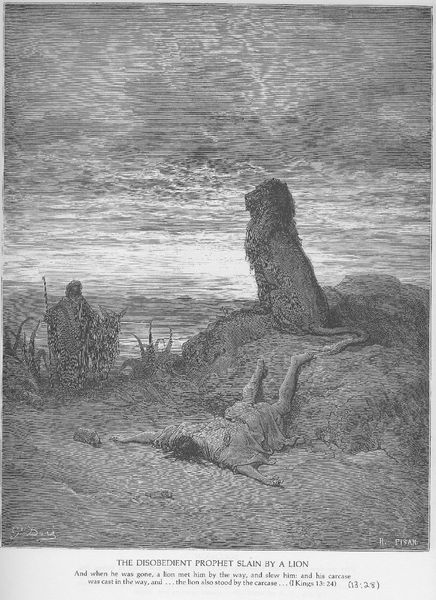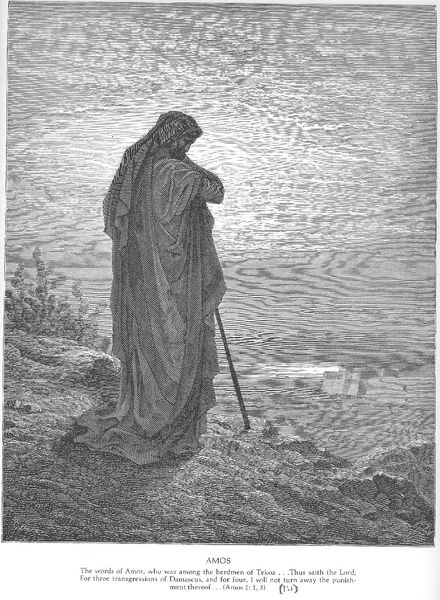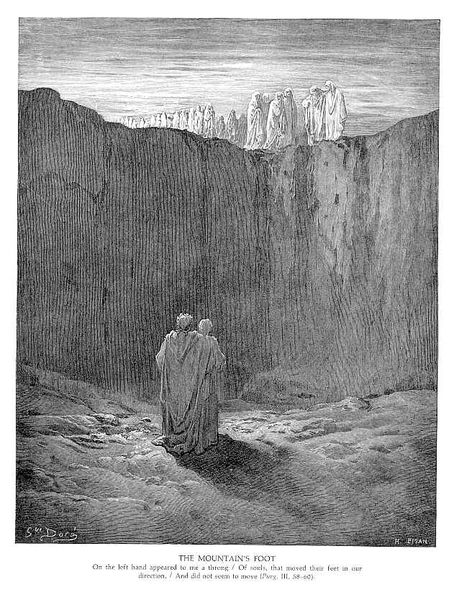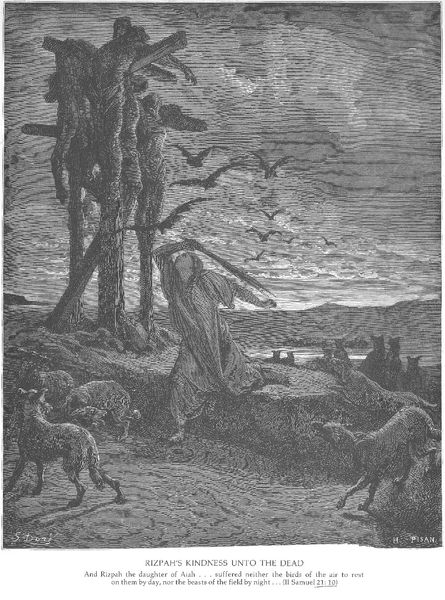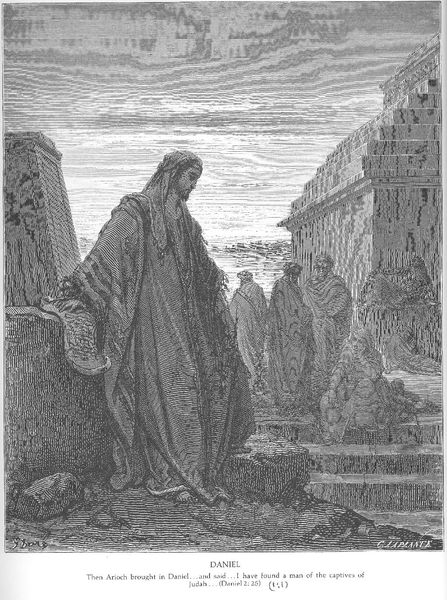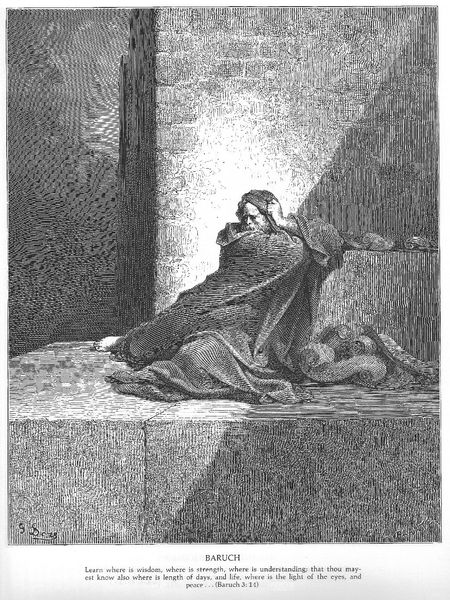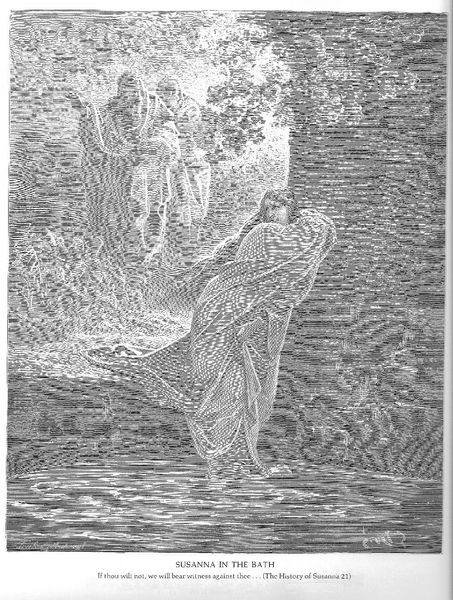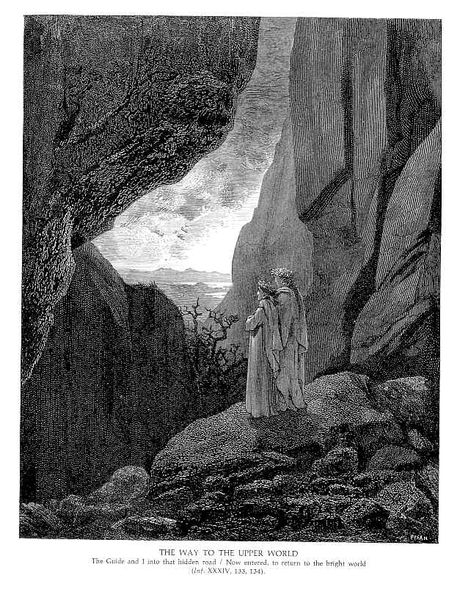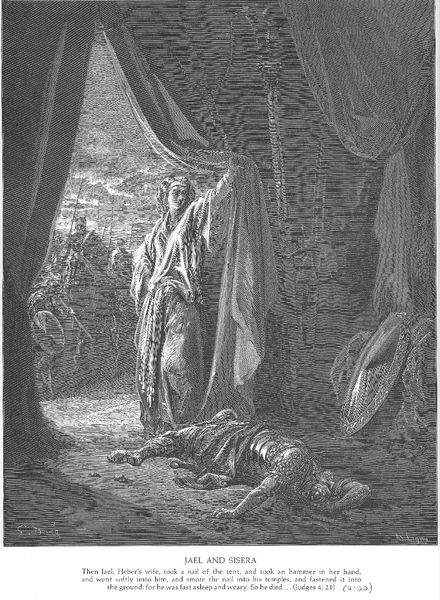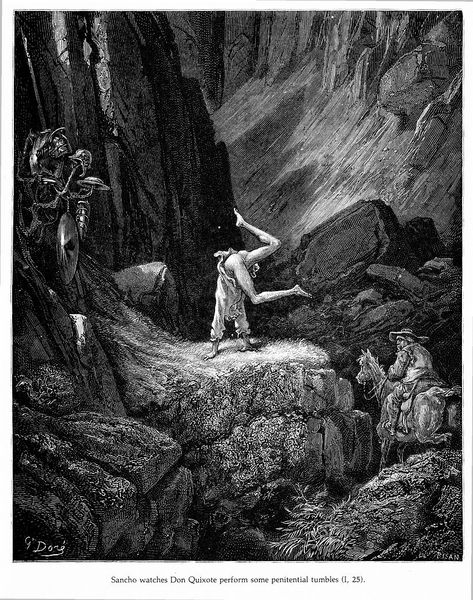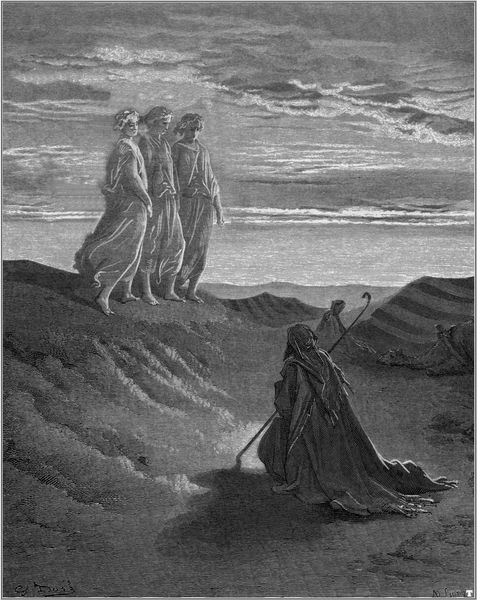
drawing, print, photography, engraving
#
drawing
#
narrative-art
# print
#
landscape
#
figuration
#
photography
#
romanticism
#
christianity
#
line
#
history-painting
#
engraving
#
natural form
Copyright: Public domain
Curator: Gustave Doré's engraving of "The Prophet Isaiah" really arrests one's attention. Editor: It feels incredibly somber, doesn’t it? The prophet seems lost in contemplation, isolated on that craggy precipice. The density of the linework really enhances that sense of melancholy and grandeur. Curator: Doré was a master of Romanticism, embracing emotional intensity. This image was made as part of an illustrated bible meant for mass consumption, so you need to remember its wide distribution and influence at the time. Editor: Looking at the iconography, the high vantage point and figure shrouded in cloth suggests Isaiah as a visionary, mediating between the divine and humanity. Note how the landscape reinforces the themes of divine solitude and authority. Curator: Yes, these popular bibles gave the rapidly growing urban middle class access to sophisticated imagery which previously may only have been available in much more expensive painted form. But how do you think these would have been understood given the turbulent politics of the period? Editor: I'd guess that they provided a kind of visual anchor, reiterating established truths in the face of rapidly transforming social realities, but notice also how Doré plays with the contrast between light and shadow. It makes the scene feel ethereal, almost like a dream. Curator: And those dramatic skies were intended to draw one's attention to divine providence, but also acted in tandem with an increasing interest in science as a means of visualizing otherwise invisible forces at work in the world. Editor: The prophet almost merges into the cliffside as if a natural part of the monumental scenery, highlighting his role as an intermediary between heaven and earth, and he literally stands between earth and God. Curator: The sublime rendering would really tap into contemporary notions about art being a window into another, higher realm, allowing artists and institutions to establish new moral touchstones amid secularizing forces. Editor: The artwork still resonates profoundly due to its evocative depiction of the prophet's inner world amidst an overwhelming, powerful landscape. It visualizes his prophetic authority and connection to something beyond the physical realm. Curator: Seeing it in its context gives you a real insight into just how intertwined artistic production was with cultural change, offering more than just devotion and spirituality.
Comments
No comments
Be the first to comment and join the conversation on the ultimate creative platform.
